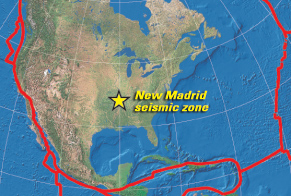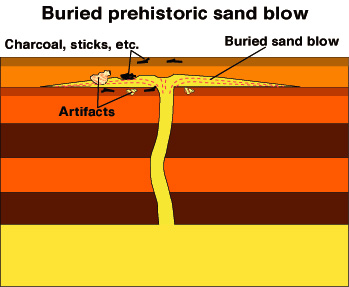|
level of hazard. Additionally, the large earthquakes in the New Madrid region seem to happen much more frequently than predicted from extremely accurate satellite-based measurements of ground deformation. These measurements show that the Earth’s crust is being deformed, or strained, extremely slowly, if at all. This is in contrast to California, where the rate of major earthquakes is predictable based on measured deformation. |
| Far from a plate boundary |
| Why does the Central United States have more large earthquakes than expected? Why is it so different from California? The answers to these questions are still unknown, but scientists now question whether there might be fundamental differences between the geologic processes at, and away from, plate boundaries. The New Madrid region is far away from any |
|
tectonic plate boundary, and thus applying what has been learned from studies of places like the San Andreas system in California to the New Madrid region may not be appropriate. |
|
On this shaded topographic relief map, the New Madrid seismic zone is shown by a star, and the boundaries of the North American and surrounding plates are indicated by red lines. Mountainous regions tend to occur near plate boundaries, resulting from the motions between plates. The nearest plate boundary to the New Madrid seismic zone is many thousands of kilometers away. |


